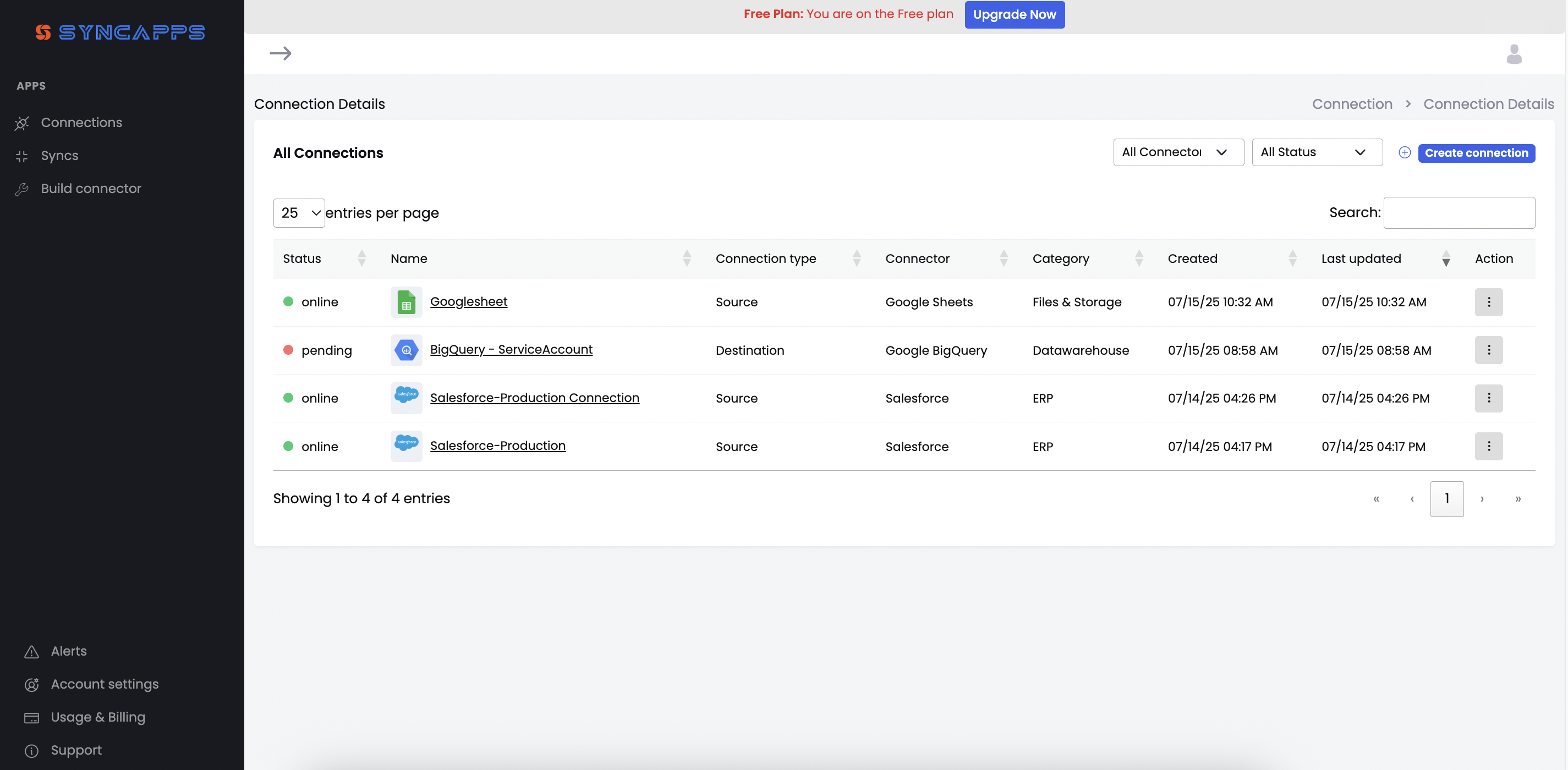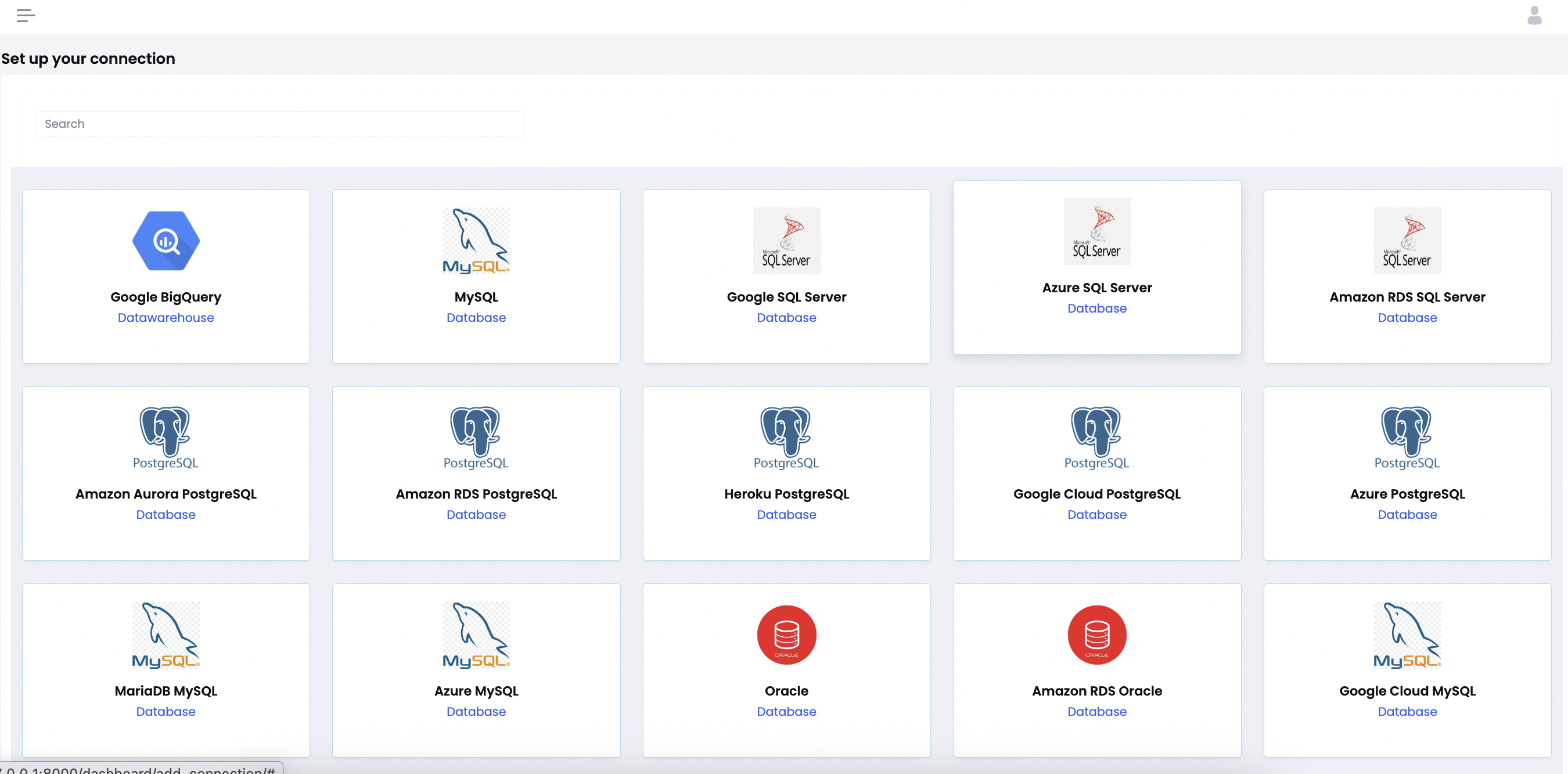Connection Management
Your Connections page is the central hub for all your data source and destination endpoints. Here you can:
- View connection status and metadata
- Filter, search, and paginate through your connections
- Quickly create, edit, or delete connections
🖥️ 1. All Connections List
Navigate to Connections from the sidebar to see the full table:

| Column | Description |
|---|---|
| Status | • 🟢 online 🔴 pending ⚫ error – shows health of your endpoint |
| Name | Human-friendly label. Click to view or edit details. |
| Connection Type | Source or Destination – indicates data flow direction. |
| Connector | Underlying connector (e.g. Salesforce, BigQuery, MySQL). |
| Category | Grouping (ERP, Database, Data Warehouse, Files & Storage, etc.). |
| Created / Updated | Timestamps for when the connection was first created and last modified. |
| Action | • ⋮ opens menu to Edit, Test, or Delete this connection. |
ℹ️ Tip: Click any column header to sort ascending/descending.
🔍 2. Filtering & Search
- Connector Filter: Narrow by connector type (e.g. only Google Sheets or only Amazon RDS).
- Status Filter: Show only “online” or “pending” connections.
- Search: Free-text search against connection name.
- Entries per page: Choose 10, 25, 50, or 100 rows per page.
➕ 3. Create a New Connection
Click Create Connection in the top-right to launch the connector gallery:

- Browse the tile catalog (SaaS, Databases, Warehouses).
- Search by name in the search bar above the tiles.
- Click any tile (e.g. “Google BigQuery”) to begin setup.
⚙️ 4. Connection Actions
Once created, each connection row’s ⋮ menu offers:
- Test Connection – Validates credentials & network reachability
- Edit – Update credentials, roles, or parameters
- Delete – Permanently remove the connection (used by no active syncs)
::: warning Deleting a connection will break any syncs that depend on it. Make sure to retire or reassign those syncs first. :::
✅ 5. Connection Status Meanings
| Icon | Status | Description |
|---|---|---|
| 🟢 | online | Credentials are valid & connection is healthy. |
| 🔴 | pending | Setup incomplete or awaiting OAuth approval. |
| ⚫ | error | Test failed (e.g. bad credentials, network issue). |
📘 Best Practices
- Name Clearly – Use descriptive names like
Prod–SalesforceorStaging–Redshift. - Tag Early – If your platform supports tags, categorize by team or project.
- Test After Edit – Always re-run “Test Connection” after any credential or network change.
- Rotate Keys – For long-lived service accounts, schedule regular key rotation in Google Cloud / Azure portal.
That should give you a complete “Connections” guide with proper Markdown, embedded images, and clear instructions. Let me know if you need any tweaks!